In 1540 Spanish Conquistadors became the first Europeans to ever see the Grand Canyon. They greatly underestimated the scale of what they were seeing. Looking down from the rim they thought the river was six feet wide (the average width is actually 300 feet). Rocks that they thought were as tall as a man turned out to be 300 feet high.
If you’ve ever visited the rim of the Grand Canyon you might understand why the Conquistadors were so disoriented. The scale of the canyon is so vast that it’s hard to comprehend. You might have learned that the canyon is 5,000 feet deep, and 12 miles across, but upon first view it somehow seems both bigger and smaller. There are no trees, or any other familiar objects to give it a sense of scale. And from the few spots where it’s even visible, the Colorado River looks like a tiny sliver of water far below.
But when you raft down the canyon the river is front and center. It’s your highway and your source of water. It’s a constant companion, something you see, hear, and feel at every step as you follow it down the heart of the great canyon. And there’s no questioning its size and power – especially when you have to navigate its rapids.
The river is also beautiful, a ribbon of light and color in the depths of this vast abyss. So in making our journey down the Grand Canyon last month I definitely wanted to capture images of the river itself. While there’s no way to make photographs that convey its sound, or how cold it feels, I could perhaps show its movement, light, color, and shimmering reflections – as I’ve tried to do in the accompanying images.
— Michael Frye
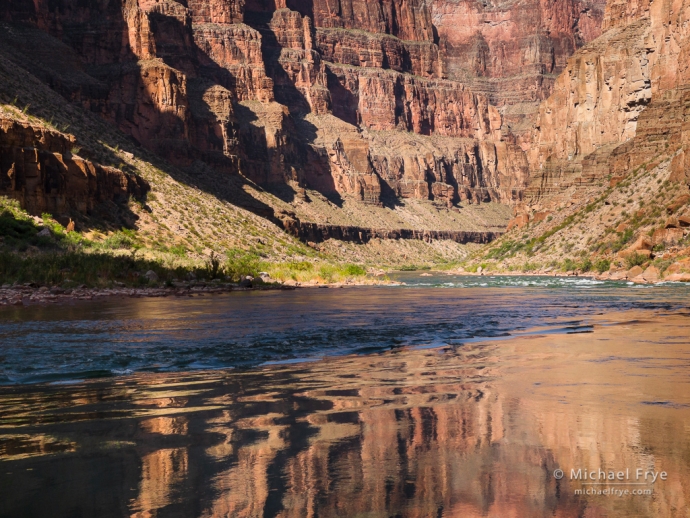
Canyon walls and reflections, Grand Canyon NP, Arizona. iPhone 12 Pro Max with 2.5x lens, 1/750 sec. at f/2.2, ISO 20.
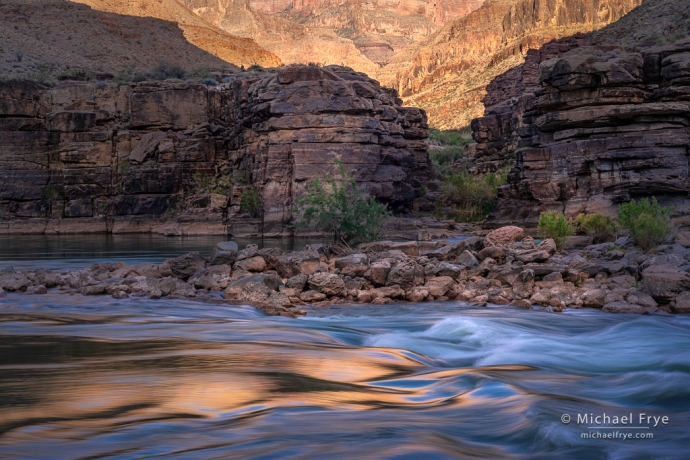
Light, shadows, and reflections, Grand Canyon NP, Arizona. 50mm, 1/3 sec. at f/16, ISO 100, 4-stop ND filter.
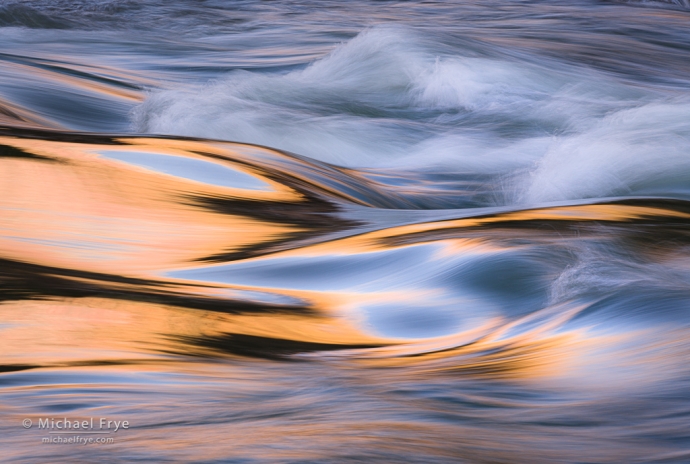
Rapid and reflections, Colorado River, Grand Canyon NP, Arizona. 149mm, 1/6 sec. at f/16, ISO 100, 4-stop ND filter.
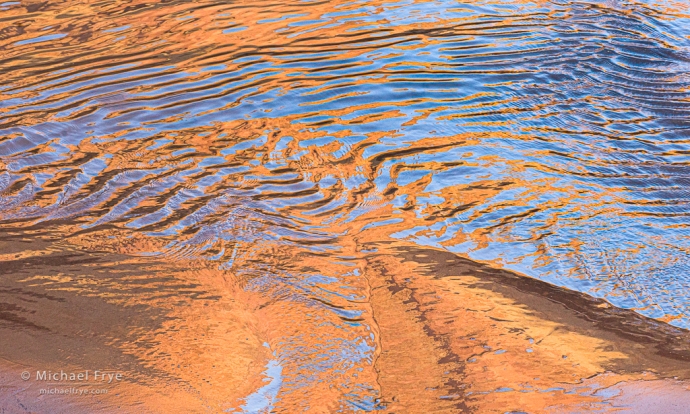
Reflections on the edge of the Colorado River, Grand Canyon NP, Arizona. 113mm, 1/125 sec. at f/16, ISO 2500.
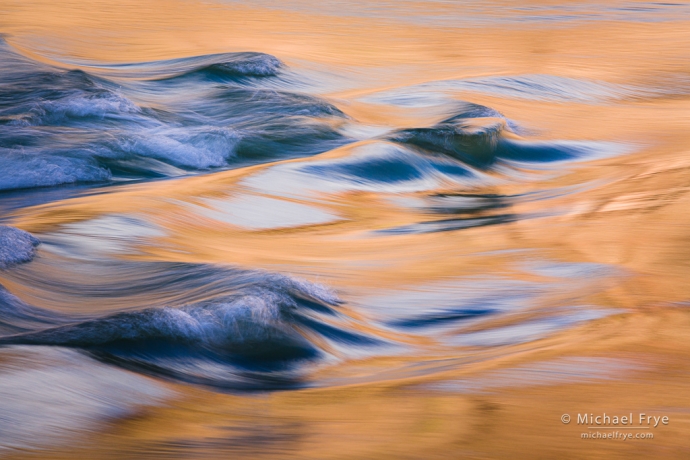
Waves with reflections, Colorado River, Grand Canyon NP, Arizona. 180mm, 1/6 sec. at f/16, ISO 100, 4-stop ND filter.
Related Posts: Views From the Canyon; Down the River
Michael Frye is a professional photographer specializing in landscapes and nature. He is the author or principal photographer of The Photographer’s Guide to Yosemite, Yosemite Meditations, Yosemite Meditations for Women, Yosemite Meditations for Adventurers, and Digital Landscape Photography: In the Footsteps of Ansel Adams and the Great Masters. He has also written three eBooks: Light & Land: Landscapes in the Digital Darkroom, Exposure for Outdoor Photography, and Landscapes in Lightroom: The Essential Step-by-Step Guide. Michael has written numerous magazine articles on the art and technique of photography, and his images have been published in over thirty countries around the world. Michael has lived either in or near Yosemite National Park since 1983, currently residing just outside the park in Mariposa, California.

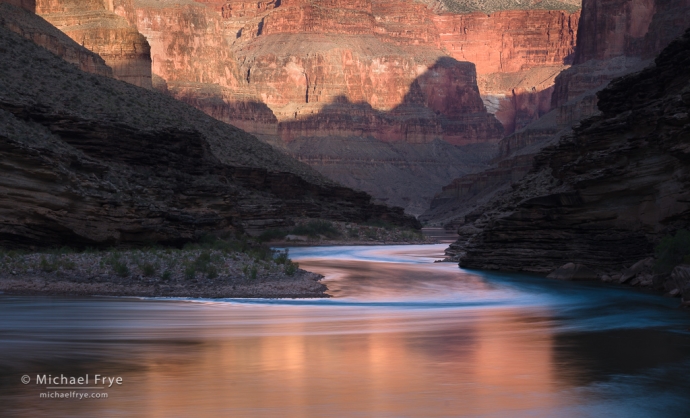
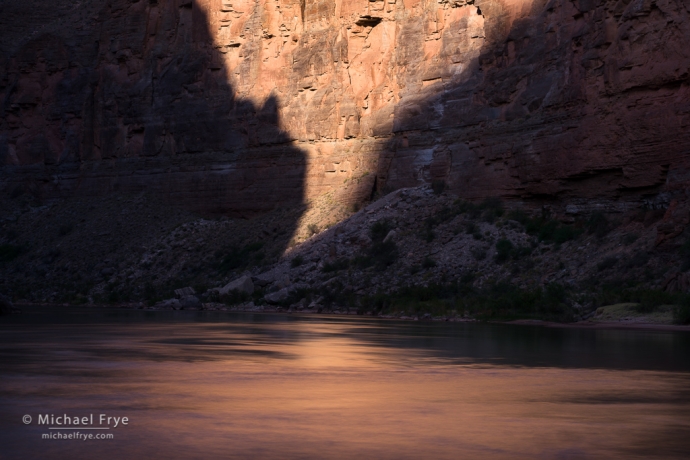
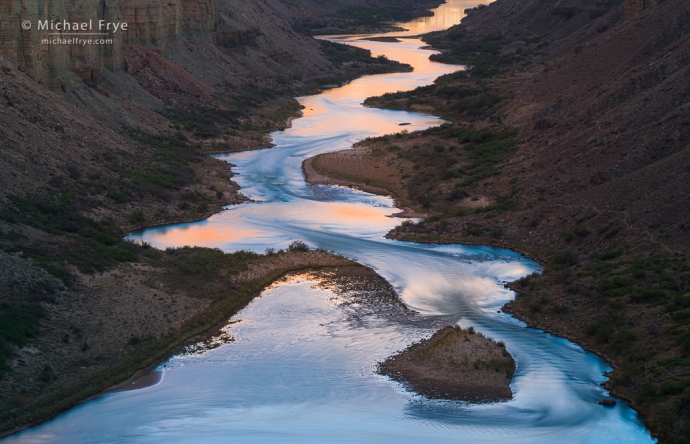
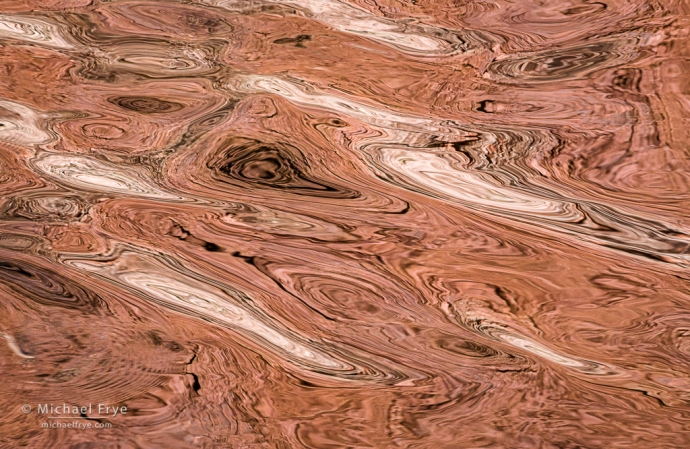








These are stunning!
Thank you Stacy!
Looks like you really enjoyed your experiences on the river. Your images show your diversity in seeing and photographing the experience.
Thank you for sharing.
Yes, I absolutely enjoyed the experience – it was fantastic. I’m glad you like the images!
Michael, I especially like “Swirls”. Very unique.
Thanks very much Dan!
Michael, thank you for sharing your trip down this great canyon river and your photos give Viewers a wonderful view of your trip.
You’re so welcome James, and thank you!
Michael magic. Thank you.
Thanks Anton!
Michael, beautiful work!!
Thank you Frank!
Hi Michael! After viewing through your images of the Grand Canyon, I must say the colors of the blue and gold are just magnificent! I’ll have to make this my next adventure.
Thanks Randy! It’s a great adventure if you can swing it.
Brilliant river light and photography Michael. I find your blog articles very inspirational. Do you ever use an ND and PL filter both (or have any combo filters like that)?
Thanks very much Ernie. Yes, I often use a polarizer and ND filter together. One reason I don’t use variable ND filters is because they combine two polarizers (linear and circular), and as you rotate one against the other the image gets darker – but in the process, you get variable polarizing effects. In other words, when you rotate the variable ND filter to, say, darken by three stops, the filter might be cutting reflections, while if you rotate it to darken by six stops it might be enhancing reflections. I want to control the ND and polarizing effects independently, so I’ll use a regular (not variable) ND filter with a polarizer over it, so I can adjust the polarizing effect separately.
But having said that, I would typically not use a polarizer when I want to show the reflections in a scene. I didn’t use a polarizer in any of the photos in this post because all of them included reflections that I wanted to show.